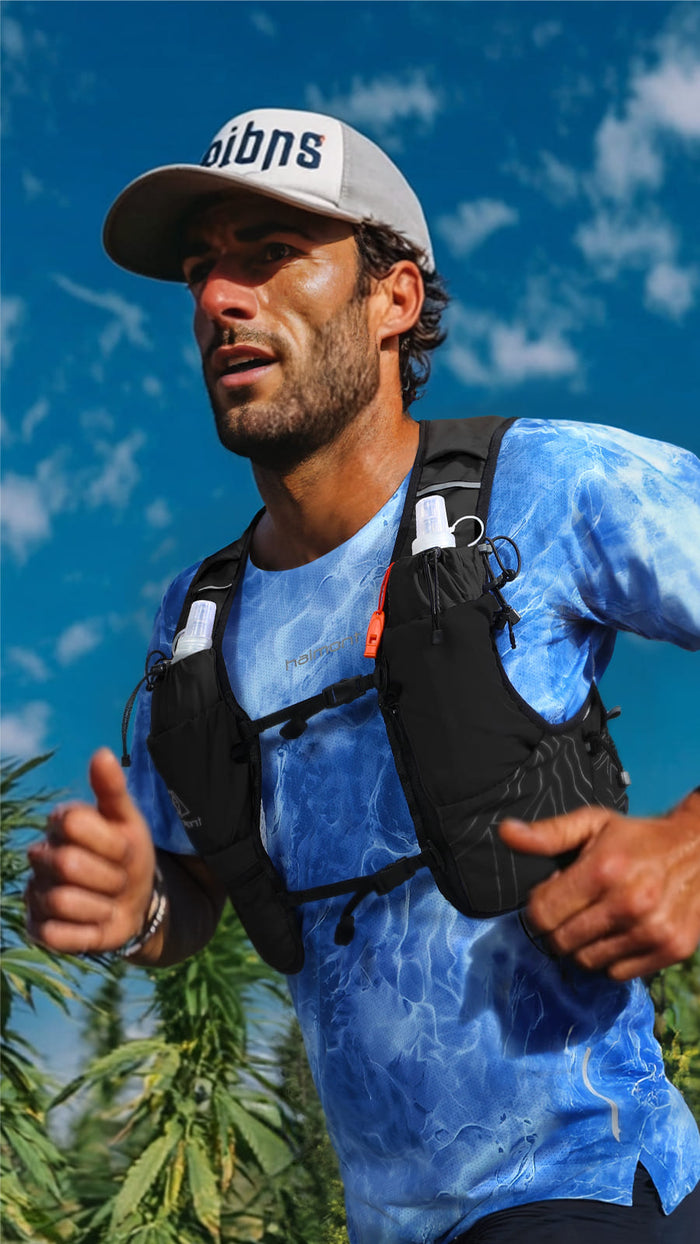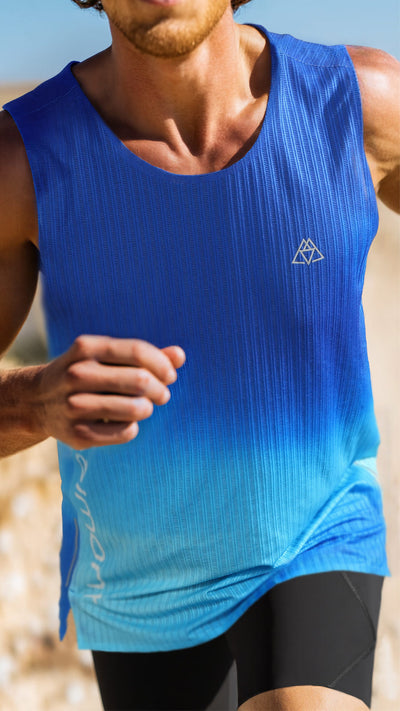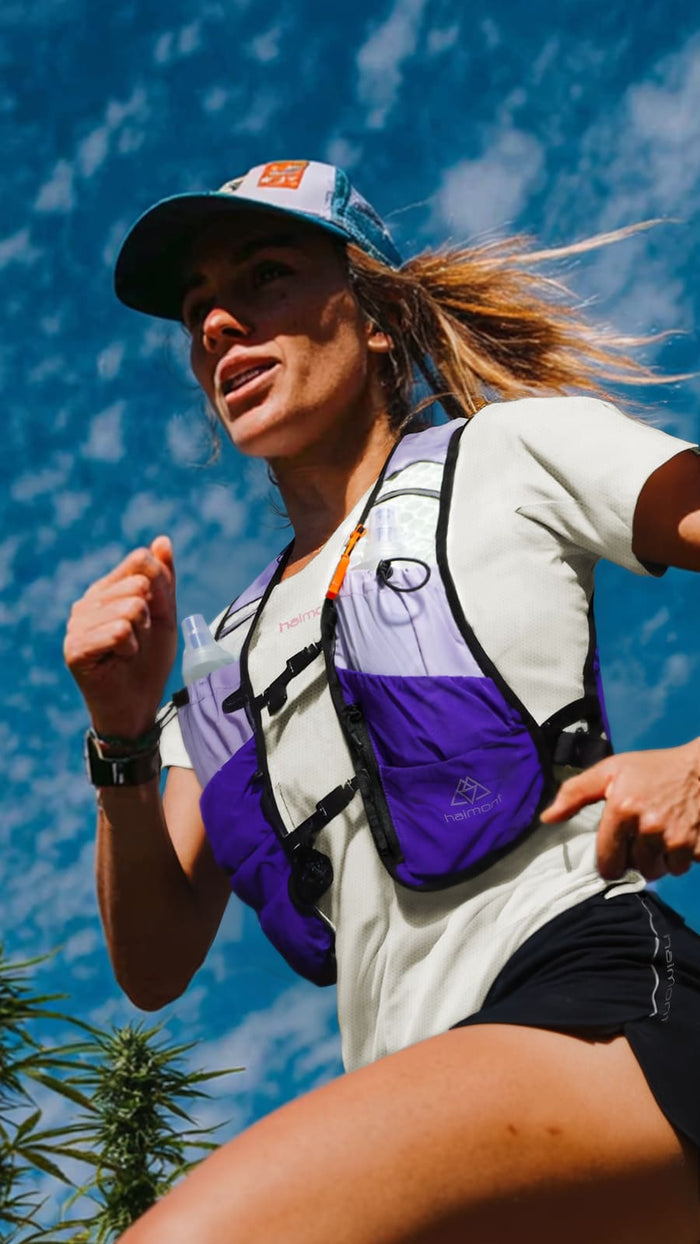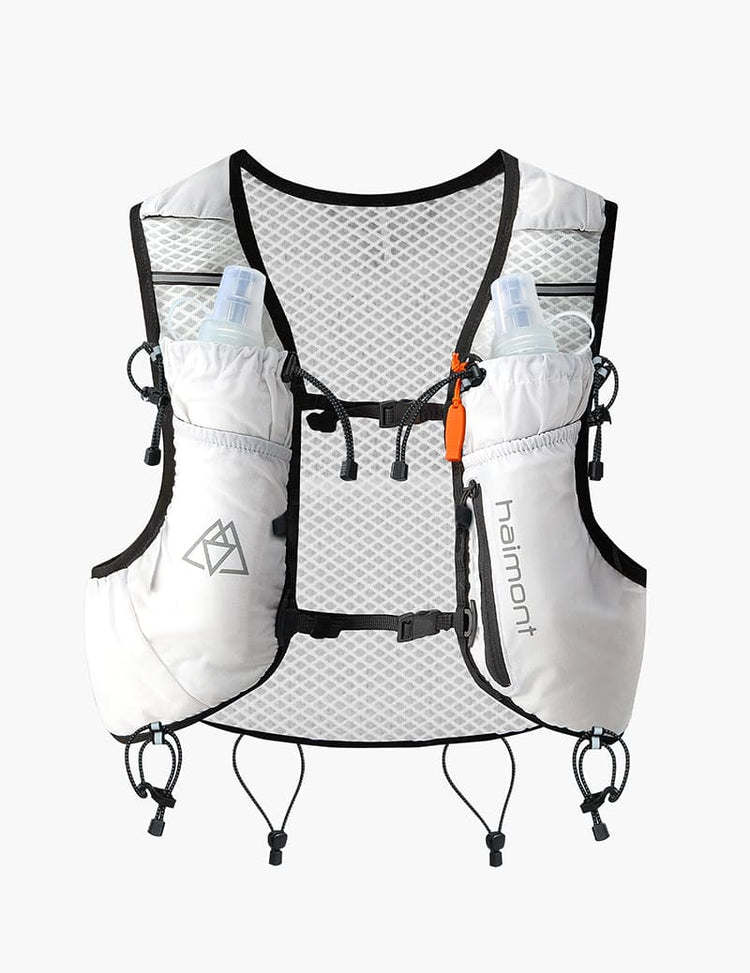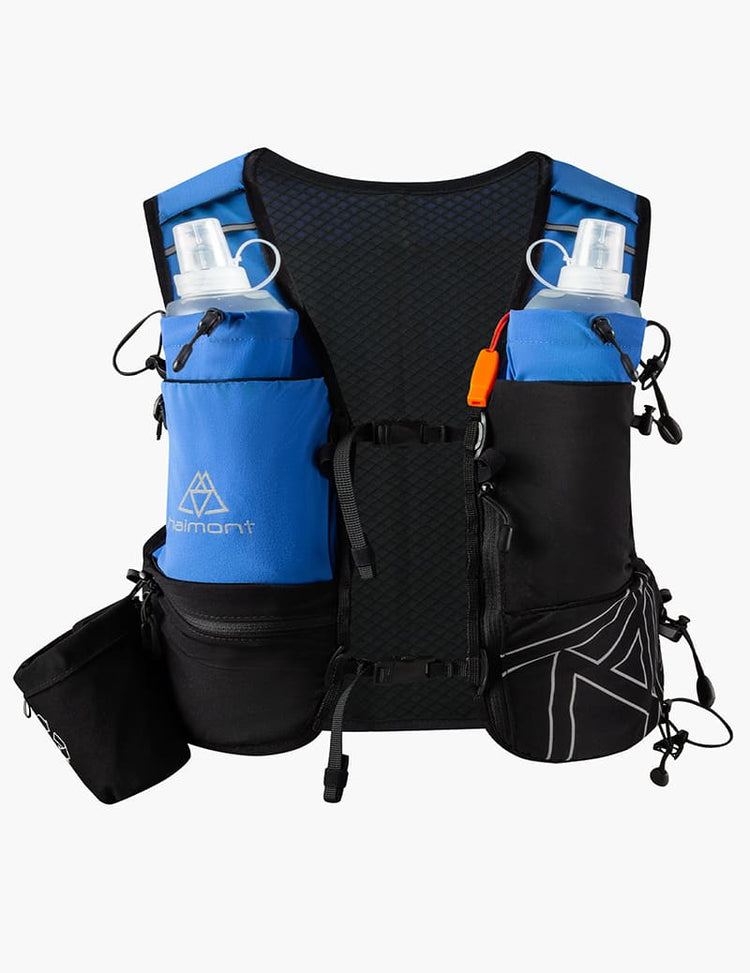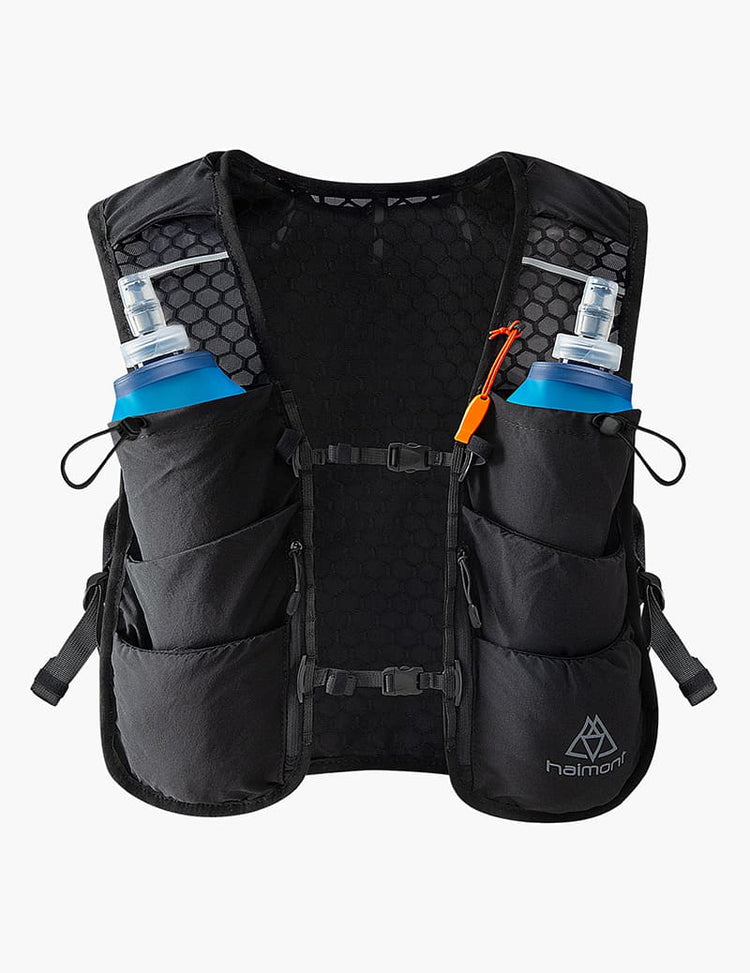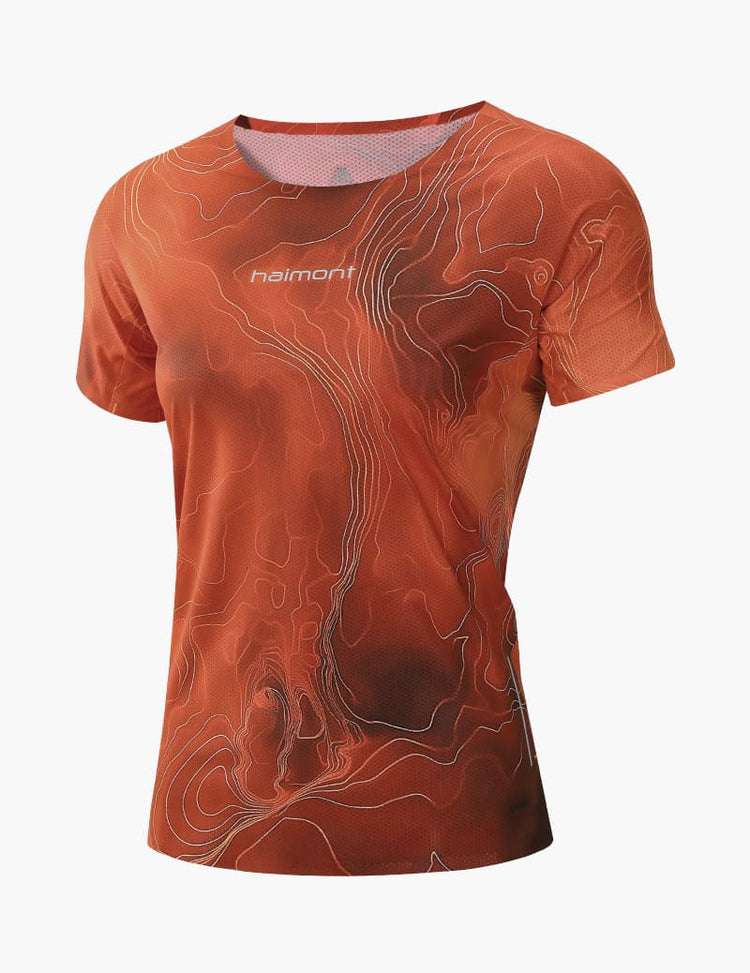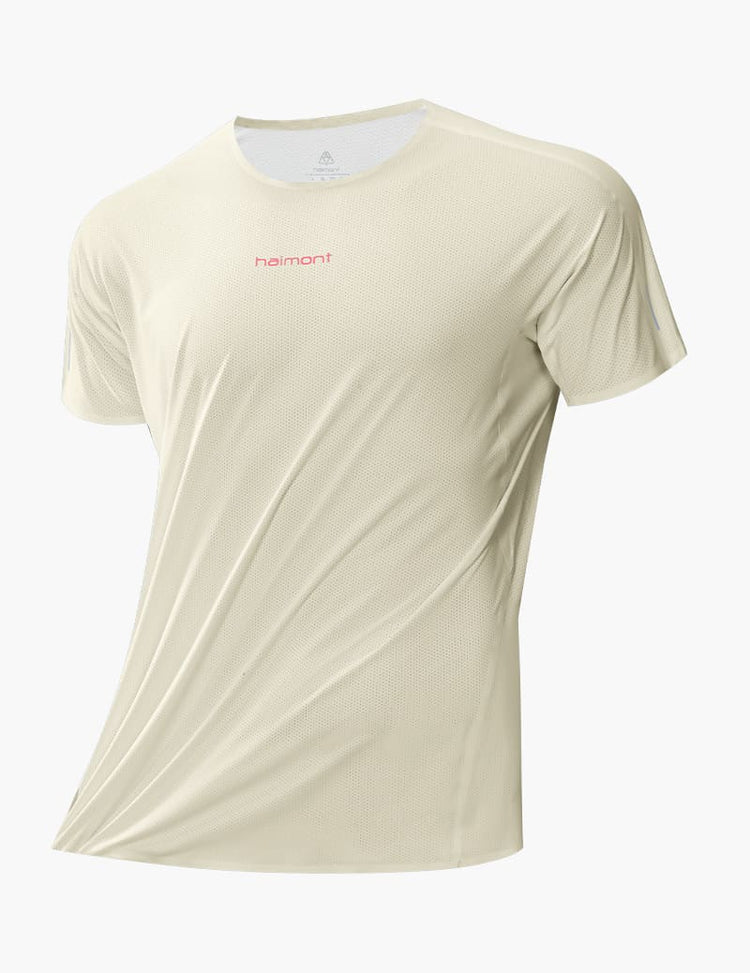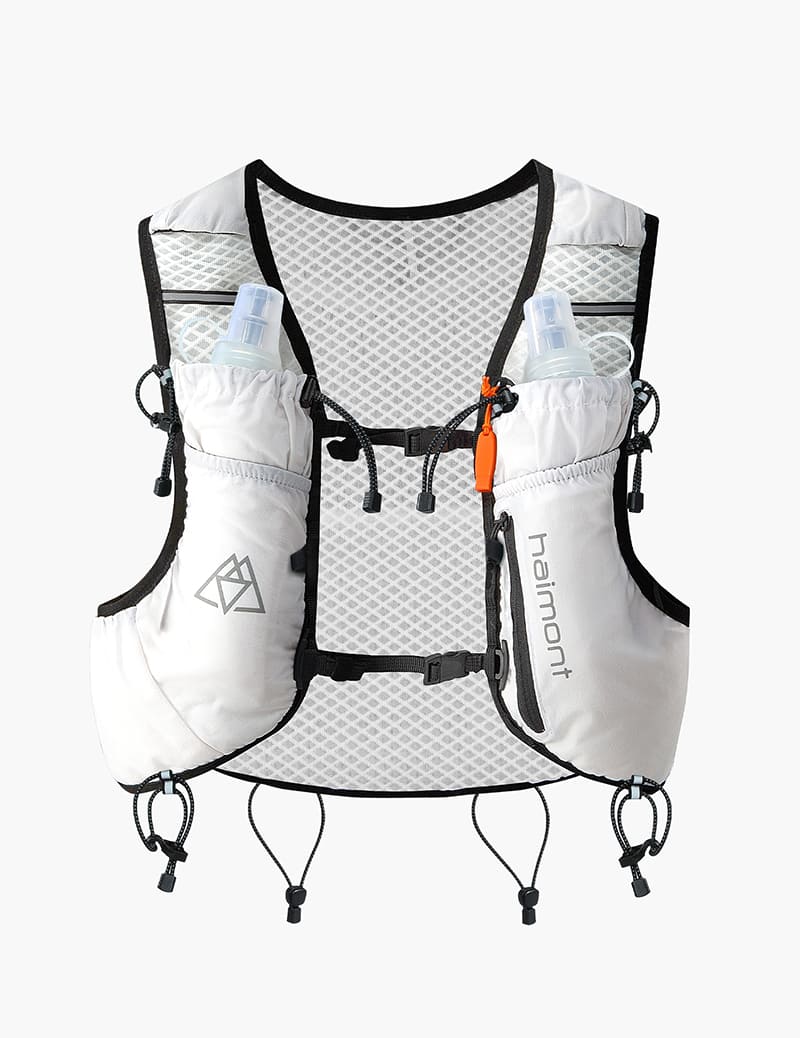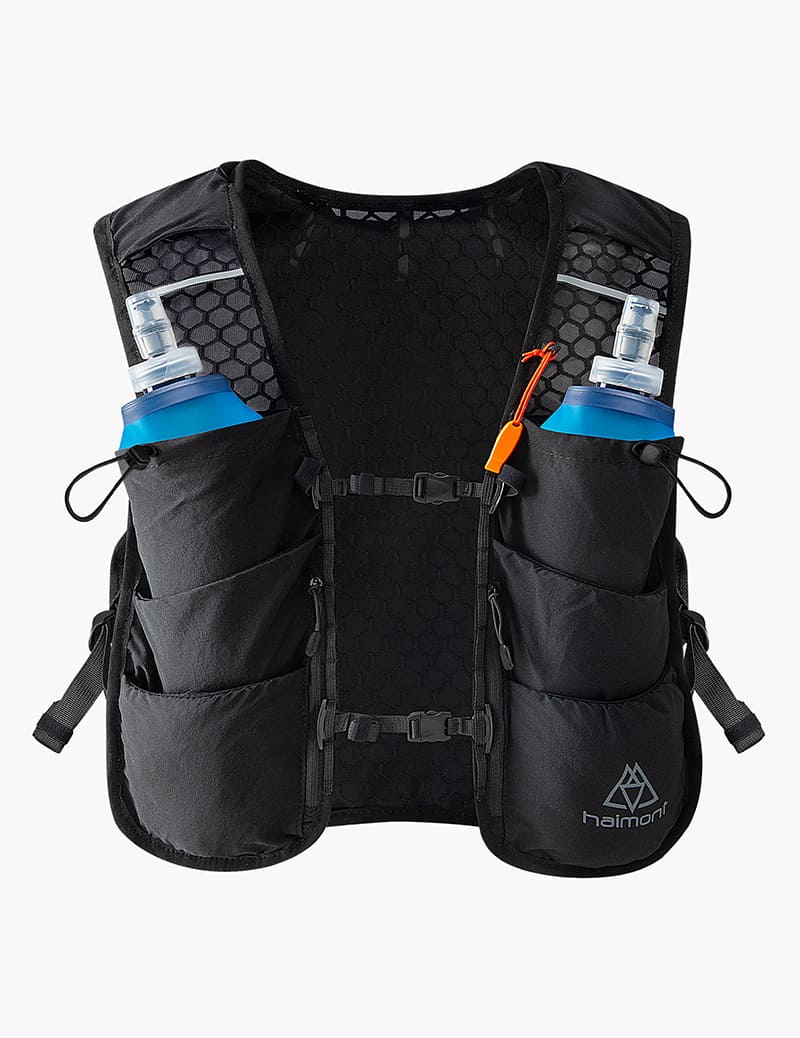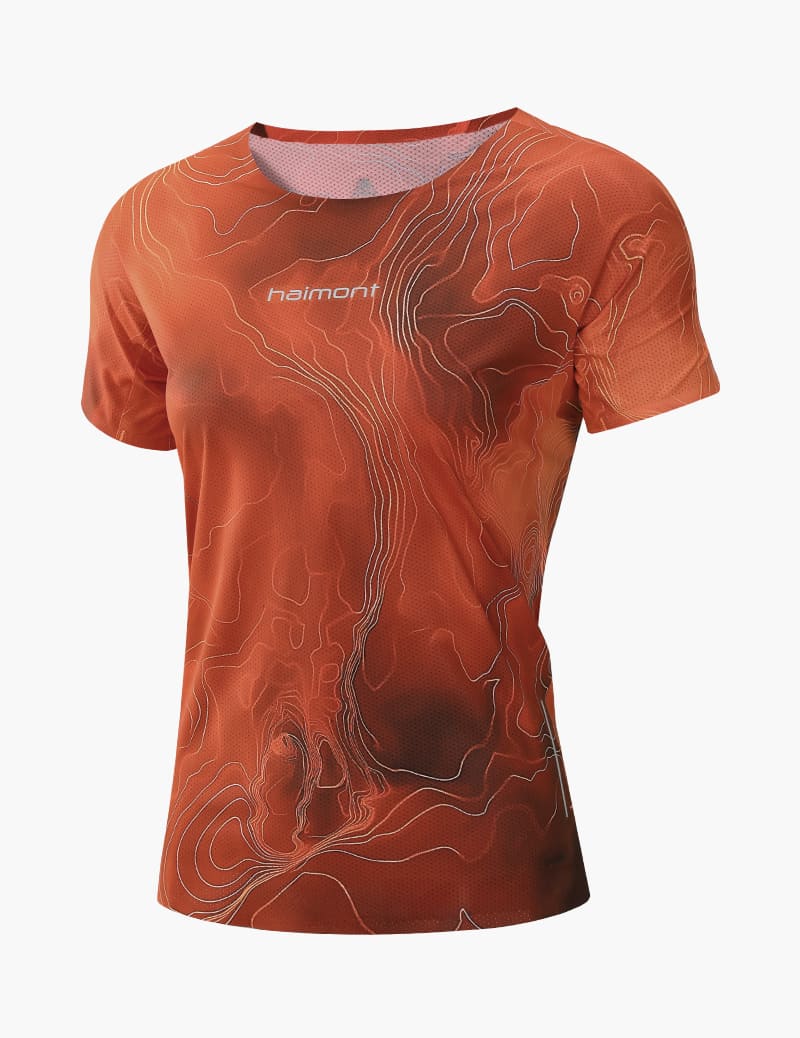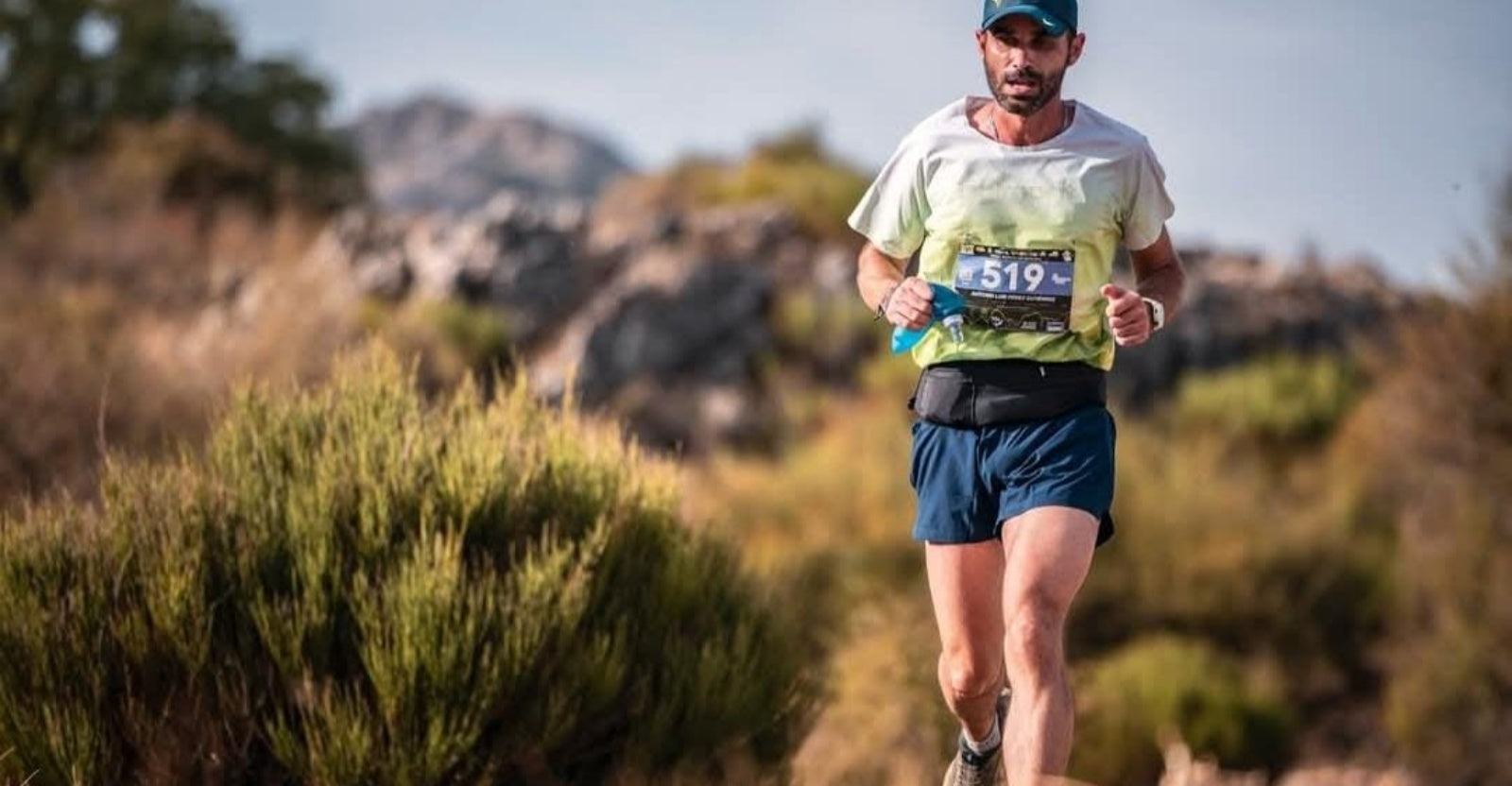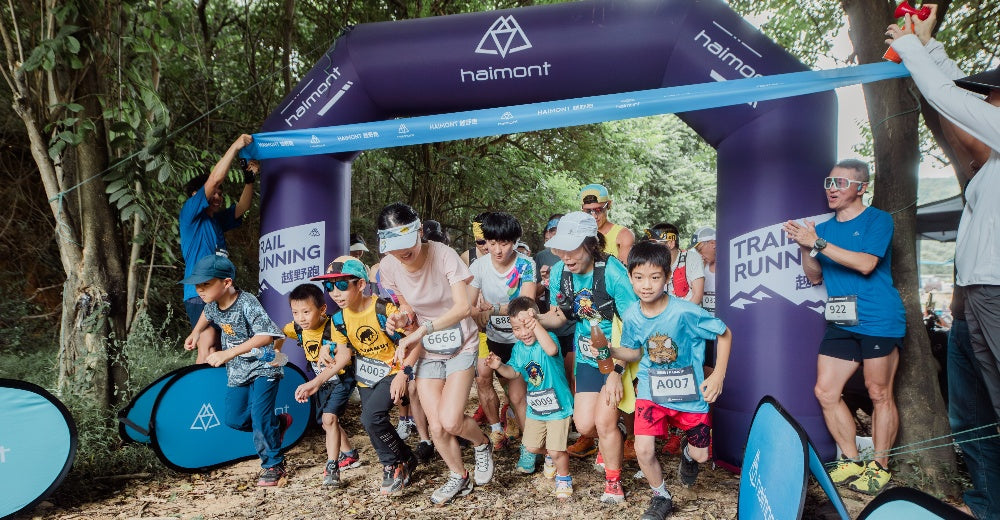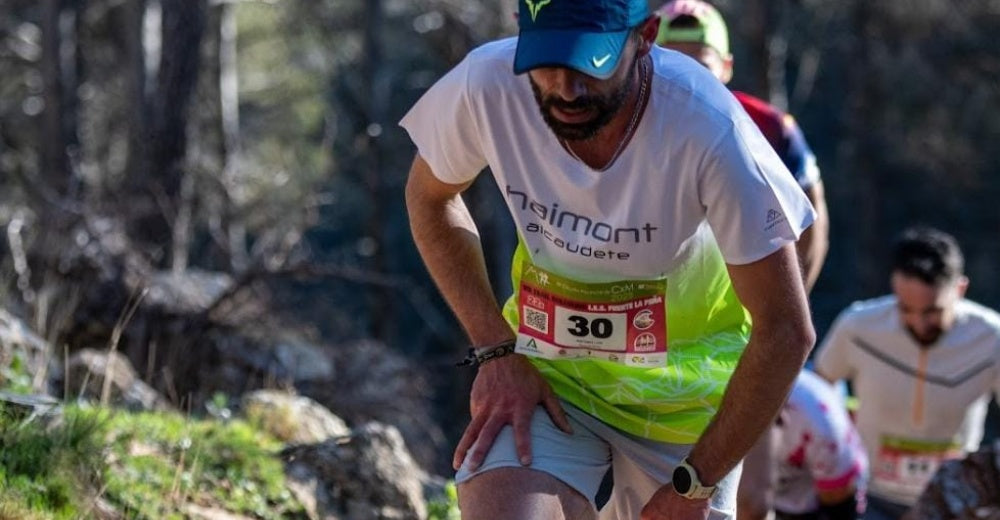Table of contents
Si los zapatos para correr, un chaleco y los suministros son el "hardware" del trail running, entonces el entrenamiento y la adaptabilidad son el "software" que apoyan tu capacidad para conquistar verdaderamente el sendero.
En Reddit, muchos corredores nuevos, después de dominar el equipo y los suministros, a menudo hacen dos preguntas clave: "¿Cómo debería entrenar para convertirme en un verdadero corredor de trail?" y "¿Qué debo hacer si encuentro clima extremo el día de la carrera?"
Estas preguntas pueden parecer avanzadas, pero en realidad son el "desafío de segunda etapa" que todo corredor debe enfrentar.
En este artículo, profundizaremos en:
- Cómo entrenar sistemáticamente para aclimatar tu cuerpo y mente al ritmo de las montañas;
- Y cómo navegar con calma condiciones extremas como lluvia intensa, calor extremo y temperaturas bajo cero para garantizar la seguridad y una finalización exitosa.
P4: ¿Cómo puedo entrenar eficazmente para el trail running? ¿Cuáles son algunos métodos de entrenamiento únicos?
La esencia del trail running no es solo "correr lejos" o "correr rápido." Se trata de permitir que tu cuerpo y mente mantengan el ritmo y el control en terrenos inciertos. Esto significa que el entrenamiento debe ser más sistemático y completo—no solo mejorando la resistencia cardiorrespiratoria, sino también fortaleciendo la fuerza de la parte inferior del cuerpo, la capacidad de respuesta al terreno, las transiciones de ritmo y la fortaleza mental.
Ciclo de Entrenamiento: Estableciendo una Estructura Sistemática
El entrenamiento de trail running generalmente se divide en tres fases, cada una con un enfoque diferente:
Resumen del Plan de Entrenamiento
|
Fase |
Duración |
Enfoque del entrenamiento |
Actividades clave |
|
1 |
8–10 semanas |
Construye la base aeróbica y la fuerza fundamental |
Carreras a ritmo lento, caminatas en inclinación y entrenamiento de fuerza |
|
2 |
6–8 semanas |
Mejora la capacidad de ascenso y la adaptación al terreno |
Repeticiones en colinas, trail running técnico, carreras a ritmo |
|
3 |
4 semanas |
Simula condiciones de carrera y reduce la carga |
Carreras largas consecutivas, correr de noche, pruebas de equipo y nutrición. |
Recomendaciones:
- Los principiantes pueden adoptar un plan de entrenamiento de 12–16 semanas.
- Incluye una semana de "recuperación" cada 3–4 semanas, reduciendo tu carga de trabajo en un 20–30%.
- Mantén una frecuencia de entrenamiento de 4–6 veces por semana, ajustando según la capacidad individual de recuperación.
Resistencia Aeróbica: La "Fundación" del Trail Running
El trail running implica fluctuaciones de alta intensidad y largas duraciones, y el sistema aeróbico es la base de todo el rendimiento.
- Long Slow Distance (LSD):
- Una vez por semana, con una duración de 2–4 horas.
- Mantén un ritmo del 65–75% de tu frecuencia cardíaca máxima.
- El objetivo es enseñar al cuerpo a usar eficientemente la grasa como fuente de energía.
- Terreno recomendado: caminos de tierra ondulados, senderos forestales y parques montañosos.
- Resistencia en colinas:
- Elige un sendero montañoso con un ascenso de 400–600 m, corriendo de forma continua durante 60–90 minutos.
- Simula las demandas físicas de una carrera de larga distancia.
Puntos clave: El entrenamiento aeróbico no es sinónimo de "lento", sino que permite al cuerpo desarrollar la capacidad de "producción sostenida". Muchos principiantes corren demasiado rápido, lo que hace que el entrenamiento sea superficial.
El "alternar subida y bajada" en trail running exige mucho más al cuerpo que correr en terreno plano.
Para evitar que las subidas te arrastren hacia abajo y que las bajadas te desgasten las piernas durante la competición, debes entrenar específicamente estas dos partes.
Entrenamiento de subida
- Organiza 1-2 veces por semana, con una pendiente recomendada del 8-15%.
- Método 1: Repeticiones en colina
- Sube durante 10-15 minutos cada vez × 4-6 series.
- Mantén un ritmo constante al subir, no persigas la velocidad.
- Corre trote cuesta abajo para recuperarte.
- Método 2: Subir con bastones de trekking (entrenamiento con bastones)
- Simula el ritmo de subida en la competición.
- Presta atención a la estabilidad del punto de apoyo del bastón y a la coordinación de la cadencia.
Entrenamiento en descenso
- El descenso es la parte donde los principiantes tienen más probabilidades de lesionarse (especialmente por la vibración excesiva del cuádriceps).
- Puntos clave del entrenamiento:
- Pasos pequeños con una cadencia rápida.
- Mantén tu centro de gravedad ligeramente hacia adelante, con los pies posicionados debajo de tu cuerpo.
- Mira de 3 a 5 metros adelante para anticipar el terreno.
- Sugerencias para la práctica:
- Elige una pendiente suave con una inclinación del 5–8%.
- Corre 3–4 series de 6–10 minutos cada sesión.
- Inicialmente, enfócate en el control y la estabilidad, luego aumenta gradualmente tu velocidad.
Alternar Subidas y Bajadas: La estabilidad es clave para la eficiencia y la seguridad
El movimiento de "subir y bajar" en el trail running exige mucho más al cuerpo que correr en terreno plano.
Al correr cuesta arriba, tu ritmo cardíaco aumenta rápidamente, poniendo mayor tensión en los músculos de las piernas; mientras que al correr cuesta abajo, tus músculos enfrentan el impacto de la contracción excéntrica.
Muchos errores de corredores novatos no se deben a la condición física, sino al control del equipo: balanceo de la mochila, centro de gravedad inestable y respiración interrumpida, todo lo cual puede agravar la fatiga.
Por lo tanto, un chaleco de trail running bien ajustado y estable es crucial para que un corredor mantenga un ritmo "fluido" en las montañas. Por ejemplo, el Haimont Running Hydration Vest pack, con su sistema de ajuste multipunto y ajuste de alta elasticidad, se mantiene firmemente en su lugar durante las subidas y bajadas, evitando que los movimientos con peso interrumpan tu zancada. Su tejido repelente al agua sigue siendo ligero y transpirable incluso con sudor y lluvia, permitiendo a los corredores concentrarse en su respiración y ritmo, en lugar del contenido de la mochila.

En las ascensiones, los bolsillos frontales del chaleco Haimont para botellas de agua y geles energéticos permiten un acceso sin interrupciones. En los descensos, su diseño ajustado a la espalda distribuye eficazmente la inercia del balanceo, reduciendo el impacto en hombros y espalda y permitiendo que el cuerpo se adapte de forma más natural a la pendiente.
Para los corredores de trail, la estabilidad no es solo una garantía de velocidad; también es esencial para la seguridad.
Un chaleco ligero, estable y repelente al agua es tu arma secreta para mantener el equilibrio mientras navegas el ritmo de la montaña.
Entrenamiento de fuerza y core: la "armadura invisible" que sostiene el cuerpo
El trail running no es un deporte de pura resistencia. Pone a prueba el soporte y la resistencia al impacto del cuerpo en terrenos complejos.
Fuerza de las extremidades inferiores
- Ejercicios recomendados: sentadillas, zancadas, step-ups y peso muerto a una pierna.
- Frecuencia de entrenamiento: 2-3 veces por semana, 40-60 minutos cada vez;
- Enfoque: Fortalecer los cuádriceps, glúteo mayor y músculos de la pantorrilla.
Estabilidad del core
- Ejercicios recomendados: plancha, soporte lateral, carrera en montaña, puente de glúteos, dead bug.
- Propósito: Mantener la estabilidad de la pelvis y la parte superior del cuerpo al subir y bajar colinas para reducir el desperdicio de energía.
Fuerza de las extremidades superiores y espalda
Los corredores de trail a menudo llevan bolsas de agua, suministros, chaquetas y otros equipos, por lo que la resistencia a la carga del tren superior también es crítica.
Se pueden añadir flexiones, dominadas, remo con peso y otros ejercicios.
Consejos de entrenamiento:
- Después de cada carrera por senderos, programa de 15 a 20 minutos para entrenamiento de fuerza.
- La persistencia a largo plazo puede reducir significativamente el riesgo de lesiones en rodillas y tobillos.
- Carreras técnicas y carreras a ritmo: Deja que tu cuerpo se adapte a la "pista real".
Carreras técnicas
- Elige terrenos complejos como raíces de árboles, rocas y grava.
- Mantén un ritmo moderado (75-80% de tu frecuencia cardíaca máxima).
- Concéntrate en la colocación del pie, la flexibilidad del tobillo y el juicio del terreno.
- Puedes añadir "ejercicios de carrera nocturna" para mejorar tu percepción de la ruta en entornos oscuros.
Carreras tempo
- Una vez por semana, durante 30-40 minutos.
- Mantén la intensidad al 80-85% de tu frecuencia cardíaca máxima.
- Objetivo: Aumentar tu umbral de lactato para que puedas mantener tu velocidad en la segunda mitad de la carrera.
Entrenamiento por intervalos
- Incorpora entrenamiento por intervalos dentro de las 6 semanas previas a la carrera, una vez por semana.
- Ejemplo: 800 metros × 6 series (alternando rápido y lento);
- Mejora la potencia explosiva y la velocidad de recuperación.
Recuperación y entrenamiento de trail running
La recuperación en trail running es más importante que en carrera en carretera porque el entrenamiento en montaña causa mayor daño muscular.
- Carrera de recuperación: 30–45 minutos de trote suave con frecuencia cardíaca controlada al 60–65%.
- Entrenamiento cruzado:
- Ciclismo, natación, montañismo y yoga son todas opciones posibles.
- Mantén la estimulación cardiopulmonar mientras reduces la carga de impacto.
- Masaje y estiramiento: Usa un rodillo de espuma para relajar los cuádriceps, músculos glúteos y pantorrillas.
- Sueño y nutrición:
- Asegura 7–8 horas de sueño por día.
- Consume carbohidratos y proteínas dentro de los 30 minutos después del entrenamiento.
Fórmula de recuperación:
- El entrenamiento aporta estimulación, la recuperación aporta progreso.
- Sin una recuperación adecuada, no importa cuánto entrenes, solo se convertirá en una carga.
Entrenamiento mental y estratégico
El trail running no solo es una prueba de condición física, sino también una prueba de resistencia mental y capacidad de toma de decisiones.
- Entrenamiento en solitario a largo plazo: Aprende a convivir con la soledad y mantener un sentido del ritmo.
- Simulación de situaciones difíciles: Crea intencionalmente escenarios de "hipoglucemia" o "subida fatigada" durante el entrenamiento para aprender a ajustar la alimentación y el ritmo.
- Visualización previa a la carrera: Simula la ruta del recorrido, la distribución de las subidas y la planificación de puntos de abastecimiento para construir "memoria corporal" con anticipación.
Consejo de corredores profesionales:
"El entrenamiento de trail running no solo te hace más fuerte, sino que también te enseña a pensar a través de la fatiga y mantener la calma en el caos."

P5: ¿Qué debo hacer si encuentro clima extremo durante una carrera de trail?
Lo más impredecible del trail running no es tu ritmo, sino el clima.
Desde valles abrasadores hasta tormentas de nieve matutinas en las montañas, el clima extremo es una prueba que todo corredor de trail enfrentará tarde o temprano. No solo pone a prueba la condición física, sino también la preparación, el juicio y la compostura. En r/trailrunning de Reddit, muchas publicaciones de "ayuda" de principiantes a menudo provienen de cambios climáticos:
"Me desmayé durante una carrera bajo una lluvia intensa. Mis zapatos están empapados y ahora tengo ampollas en los pies. ¿Qué debo hacer?"
"Bebí 3 litros de agua con el calor y aún tengo calambres. ¿Es porque tengo bajos los electrolitos?"
"La temperatura bajó a 0 grados Celsius por la noche y empecé a temblar. Casi no lo logro." Estos no son casos aislados. A continuación, desglosaremos sistemáticamente estrategias para enfrentar cuatro condiciones climáticas extremas comunes.
Etapas extremadamente calurosas: Corre más despacio, levántate más temprano y aplica protección solar a fondo
Identificación de Riesgos
- Cuando las temperaturas superan los 28°C y la humedad es alta, el riesgo de deshidratación aumenta significativamente.
- Si la temperatura de tu cuerpo supera los 39°C, puedes experimentar signos de golpe de calor (mareos, náuseas y piel ardiente).
Equipo
- Ropa: Ropa funcional ligera, de secado rápido y resistente a olores es crucial. Por ejemplo, la Haimont Mountain Wind Trail T-Shirt utiliza una estructura de tela altamente transpirable y tecnología antiolor. Incluso al correr a alta intensidad en secciones calientes y húmedas de la carrera, puede mantener el cuerpo seco y evitar la incomodidad por fricción causada por la ropa húmeda.
- Protección para la cabeza: Sombrero para el sol, pañuelo para la cabeza o toalla de hielo (mojarla en agua y envolverla alrededor del cuello para disipar el calor).
- Sistema de hidratación: Mójate la cabeza y envuelve dos soft water bottles (en el bolsillo delantero) y tabletas de electrolitos o pastillas de sal.
- Estrategias prácticas
- Ritmo de hidratación: Bebe agua en pequeños sorbos cada 15–20 minutos, en lugar de esperar a tener sed.
- Estrategia de energía: Elige geles energéticos o bloques masticables que contengan electrolitos, evitando productos con alto contenido de azúcar.
- Métodos de enfriamiento: Moja tu pañuelo, pon cubitos de hielo en tu gorra y vierte agua en los puntos de ayuda.
- Estrategia de ritmo: Reduce tu ritmo de carrera en un 10–15 % cuando corras en condiciones de calor para conservar energía y evitar el sobrecalentamiento.
Consejo:
"No te exijas hasta los extremos del calor. Es mejor sacrificar tu rendimiento que perder la cabeza."
Si experimentas mareos persistentes, escalofríos o confusión, detente inmediatamente, refréscate y busca atención médica.
Lluvia intensa y terreno resbaladizo: La estabilidad es primordial; el antideslizante y la impermeabilidad son igualmente importantes
Las tormentas de montaña turbulentas suelen llegar de repente, y los caminos fangosos y las rocas resbaladizas pueden causar fácilmente caídas o tropiezos. En esos momentos, los corredores deben recordar una palabra: estabilidad.
- Ajusta tu zancada y cadencia: Acorta tu zancada, reduce tu velocidad en bajada y mantén tu centro de gravedad directamente bajo tu cuerpo. Evita paradas bruscas o fuerzas laterales al encontrarte con terreno fangoso.
- Haz buen uso de los bastones de trekking: En condiciones resbaladizas, los bastones de trekking son casi una "tercera pierna" efectiva. Por ejemplo, los bastones de trekking ultraligeros de carbono y aluminio de Haimont, fabricados con una estructura híbrida de fibra de carbono y aleación de aluminio, combinan resistencia y ligereza, proporcionando un soporte estable en lluvia intensa y terrenos rocosos, ayudando a los corredores a mantener el equilibrio y compartir el impacto del descenso.
- Durante carreras de trail de larga distancia, especialmente en condiciones lluviosas, los bastones de trekking no solo reducen la presión en tus rodillas, sino que también proporcionan una superficie segura y antideslizante al vadear, cruzar puentes y descender pendientes empinadas. Prioriza tanto la impermeabilidad como el aislamiento: Cuando estás empapado por la lluvia, tu cuerpo pierde calor fácilmente. Se recomienda elegir una prenda superior ligera, cortavientos y de secado rápido (como la Haimont Mountain Wind Trail T-Shirt) para ayudar a bloquear el viento frío y mantener una temperatura corporal estable.
- Ajústate rápidamente a los puntos de suministro: En lluvia intensa, la temperatura en las estaciones de abastecimiento puede variar significativamente.
Al reabastecerte, evita el viento y la lluvia tanto como sea posible para prevenir una caída repentina de la temperatura corporal.
Las lluvias torrenciales ponen a prueba no solo la velocidad, sino también el juicio y la compostura. Un corredor de montaña verdaderamente maduro debe dominar el uso del equipo—desde suelas antideslizantes y bastones de trekking hasta cortavientos ligeros—para mantener la estabilidad y seguridad en los elementos.
Estrategias prácticas
- Ajusta tu zancada: Acorta tu paso, planta firmemente los pies y inclínate ligeramente hacia adelante para mantener tu centro de gravedad.
- Usa bastones de trekking para el equilibrio, especialmente al descender. No te enfoques en la velocidad en línea recta; usa áreas secas en el bosque para evitar agua estancada.
- Si tus zapatos están completamente empapados de agua, cambiar tus calcetines durante la carrera puede prevenir eficazmente las ampollas.
Durante carreras en frío o nocturnas: El calor central es primordial, y la energía es la fuente de calor
Identificación de Riesgos
- Cuando las temperaturas bajan de 5°C y los vientos son fuertes, la pérdida de calor se acelera.
- Una caída de la temperatura corporal por la noche combinada con hambre puede conducir fácilmente a una hipotermia leve (temblores, debilidad y habla lenta).
Preparación del equipo
- Sistema de capas:
- Capa base: Capa base de secado rápido (que absorbe la humedad)
- Capa intermedia: Capa ligera de aislamiento (forro polar o plumón)
- Capa exterior: Chaqueta cortavientos e impermeable (con capucha)
- Artículos pequeños: Gorra, calentador de cuello, guantes, calcetines de repuesto
- Aislamiento: Manta térmica de emergencia (equipo obligatorio para la carrera).
Respuesta práctica
- Mantén la ingesta calórica: Consume 200–300 kcal por hora (geles energéticos, nueces, mantequilla de maní).
- Usa múltiples capas en áreas ventosas o en altitudes elevadas, y evita períodos prolongados.
- Si comienzas a temblar o experimentas entumecimiento en los dedos, añade inmediatamente más capas y repón energía rápidamente.
- Por la noche, puedes colocar una bolsa de calor alrededor de la cintura o la espalda para ayudar a mantener el calor.

Tormentas eléctricas, niebla densa y vientos fuertes: La supervivencia es la prioridad; terminar la carrera es secundario
Identificación de Riesgos
- El rayo es una de las condiciones climáticas más peligrosas en carreras alpinas.
- La niebla y los vientos fuertes a menudo pueden causar desorientación y caídas.
Equipo
- Equipo de emergencia: Silbato, linterna frontal (completamente cargada + baterías de repuesto), ropa reflectante.
- Dispositivo de localización: Reloj GPS + mapa offline de la ruta de la carrera (descargado en modo offline).
- Protección: Gorra cortaviento, gafas, capa exterior impermeable.
Respuesta práctica
- Durante una tormenta eléctrica, desciende rápidamente a un lugar más bajo. No te detengas en crestas, bajo árboles ni en áreas abiertas.
- Mantén los bastones de trekking y las botellas metálicas alejados de tu cuerpo. En niebla densa: Sigue las marcas del recorrido, no sigas ciegamente a otros y mantén un juicio calmado.
- Con vientos fuertes: Inclínate ligeramente hacia adelante, mantén un centro de gravedad bajo y ajusta la tensión de las correas de tu mochila para evitar balanceos.
- Si el riesgo de hipotermia aumenta, detente inmediatamente en un lugar seguro, envuélvete en una manta térmica y espera atención médica.
Consejos basados en la experiencia
"Terminar la carrera siempre viene después de la seguridad."
Incluso si te retiras de una carrera, es más gratificante que ser encontrado por un equipo de rescate.
Correr en senderos es más que simplemente "correr", es un viaje de coexistencia con la naturaleza.
Desde zapatillas para correr hasta mochilas tipo chaleco, desde horarios de alimentación hasta resistir los elementos: las confusiones iniciales de los corredores de senderos son en realidad parte del viaje de crecimiento de todo corredor.
El equipo te ayuda a llegar más lejos, el combustible te permite correr con más constancia, pero el entrenamiento y la adaptabilidad son las marcas de la verdadera madurez en el sendero. Correr en senderos no es solo velocidad y posición; es más un diálogo con la naturaleza y contigo mismo.
Aprenderás a mantener la calma en el calor, la estabilidad bajo la lluvia y la perseverancia en el frío de la noche. Cada ascenso y giro pone a prueba tanto tu mente como tu cuerpo. Ya seas un novato haciendo preguntas en Reddit o un corredor preparándote para tu primera carrera de 50 km, recuerda:
La preparación no es una carga que restrinja tu libertad; es la confianza que te permite correr libremente hacia las montañas. En cada sesión de entrenamiento y carrera, Haimont busca ayudarte a cambiar tu enfoque de "sobrevivir al entorno" a "sentir el sendero" con equipo ligero, protección confiable y diseño profesional.
Porque el paisaje más hermoso siempre se encuentra en el viaje donde nunca te rindes.


